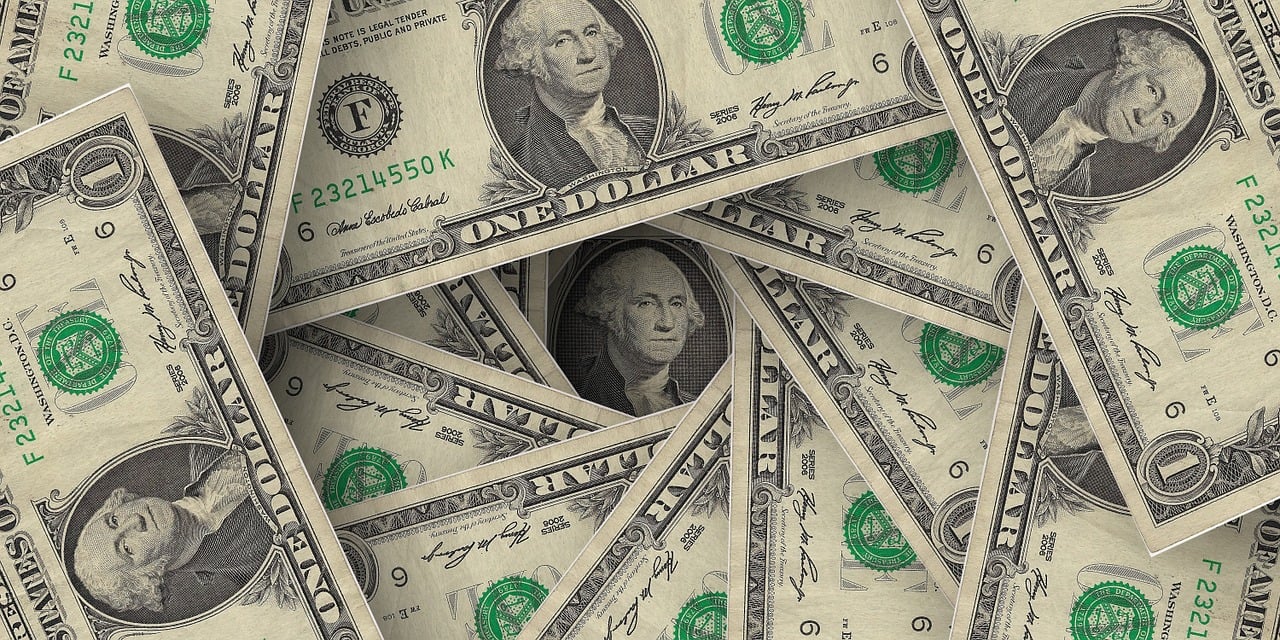
The dollar index (DXY00) Monday rose by +0.17%. The dollar on Monday recovered from a 1-week low and turned higher as US tariff concerns roiled global equity markets and boosted safe-haven demand for the dollar. The dollar extended its gains after the March MNI Chicago PMI unexpectedly rose to a 16-month high. Gains in the dollar were limited due to concerns that US tariffs would derail economic growth.
The US March MNI Chicago PMI unexpectedly rose +2.1 to a 16-month high of 47.6, stronger than expectations of a decline to 45.0.
The US Dallas Fed March manufacturing activity outlook survey unexpectedly fell -8.0 to an 8-month low of -16.3, weaker than expectations of an increase to -5.0.
Richmond Fed President Barkin said it would take time before policymakers have a clearer idea on how President Trump's tariff policies might affect their interest rate decisions, and they would need confidence that inflation will move down before lowering interest rates again.
Market attention this week will include Tuesday's US March ISM manufacturing index (expected -0.8 to 49.5). On Wednesday, the March ADP employment change is expected to climb by +120,000. On Thursday, the March ISM services index is expected to fall -0.5 to 53.0, and on Friday, March nonfarm payrolls are expected to increase by +138,000, and the March unemployment rate is expected unchanged at 4.1%. Also, March average hourly earnings are expected +0.3% m/m and +4.0% y/y, unchanged from February. Finally, on Friday, Fed Chair Powell is expected to speak to the Society for Advancing Business Editing and Writing Conference on the economic outlook.
The markets are discounting the chances at 19% for a -25 bp rate cut after the May 6-7 FOMC meeting.
EUR/USD (^EURUSD) Monday fell by -0.12%. The euro Monday gave up an early advance and turned lower after German March consumer prices slowed more than expected, a dovish factor for ECB policy. Also, lower German bund yields on Monday weakened the euro's interest rate differentials after the 10-year German bund yields fell to a 3-1/2 week low. Losses in the euro were limited after German Feb retail sales rose more than expected.
German March CPI (EU harmonized) eased to +2.3% y/y from 2.6% y/y in Feb, weaker than expectations of +2.4% y/y and the slowest pace of increase in 6 months.
German Feb retail sales rose +0.8% m/m, stronger than expectations of unchanged m/m and the biggest increase in 5 months.
Swaps are discounting the chances at 73% for a -25 bp rate cut by the ECB at the April 17 policy meeting.
USD/JPY (^USDJPY) Monday rose by +0.19%. The yen on Monday fell from a 1-week high against the dollar and turned lower as a rebound in US equity markets from sharp early losses curbed safe-haven demand for the yen. Also, a recovery in T-note yields from early losses on Monday weighed on the yen.
The yen on Monday initially moved higher after the Nikkei Stock Index plunged to a 6-1/2 month low, which sparked safe-haven buying of the yen. Stronger-than-expected Japanese industrial production and retail sales reports also supported the yen. In addition, the yen rose after the BOJ said it would cut the amount of long-term bonds it buys in Q2, the first decrease in a year.
Japan Feb industrial production rose +2.5% m/m, stronger than expectations of +2.0% m/m and the biggest increase in 11 months.
Japan Feb retail sales unexpectedly rose +0.5% m/m, stronger than expectations of a -0.2% m/m decline.
The BOJ cut its buying of long-term government bonds for the first time in a year, reducing the amount of 10-year to 25 year debt it will buy in Q2 to 405 billion yen from 450 billion yen in Q1.
April gold (GCJ25) Monday closed up +37.10 (+1.15%), and May silver (SIK25) closed down -0.203 (-0.58%). Precious metals settled mixed on Monday, with April gold posting a record nearest-futures high of $3,132.10 an ounce. Trade war concerns continue to fuel safe-haven demand for precious metals ahead of Wednesday's implementation of new reciprocal tariffs. Also, geopolitical risks in the Middle East are boosting safe-haven demand for precious metals as Israel continues airstrikes across Gaza, ending a two-month ceasefire with Hamas, and as the US continues to launch strikes on Yemen's Houthi rebels. Silver also has support on concern about retaliatory tariffs on silver exports from Canada and Mexico, where the US gets 70% of its silver.
Strength in the dollar on Monday was bearish for precious metals. Also, Monday's action by the BOJ to cut its purchase of long-term bond purchases for Q2 is bearish for gold. Silver was weighed down by negative carryover from Monday's slide in copper prices to a 1-1/2 week low. Silver is also under pressure on concern US tariffs will lead to a trade war that derails economic growth and industrial metals demand.
On the date of publication, Rich Asplund did not have (either directly or indirectly) positions in any of the securities mentioned in this article. All information and data in this article is solely for informational purposes. For more information please view the Barchart Disclosure Policy here.






